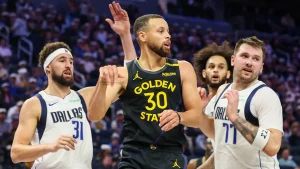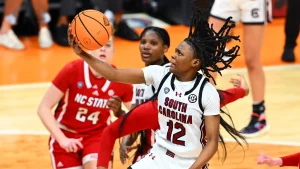
In what ways have the Edmonton Oilers enhanced their approach to drafting and player development?
The Edmonton Oilers, historically one of the most iconic franchises in the NHL, have seen their fair share of highs and lows in the modern era. After decades of success in the 1980s, including winning five Stanley Cups during that decade, the Oilers struggled with consistency and competitiveness for many years. However, since the mid-2010s, the team has experienced a resurgence, primarily fueled by its high draft picks and a renewed focus on player development. Central to this resurgence is the Oilers’ approach to drafting and player development, which has evolved and improved over time.
This article will explore the ways in which the Edmonton Oilers have enhanced their approach to drafting and player development, focusing on their scouting strategies, changes in management and coaching, development system, and the focus on cultivating young talent. We will also discuss how the team’s improved player development infrastructure has contributed to a more competitive roster, building from the ground up to support the franchise’s superstars like Connor McDavid and Leon Draisaitl.
1. A Shift in Scouting and Drafting Philosophy
The Oilers’ struggles in the years following their 2006 Stanley Cup Finals appearance were partially due to inconsistent drafting and a failure to develop homegrown talent to complement their existing roster. As the team entered a rebuilding phase, they decided to reevaluate and overhaul their approach to drafting and scouting.
The Oilers began by shifting their focus to scouting more broadly, expanding their network of scouts across North America and Europe. They recognized the need to move beyond traditional scouting methods and sought to embrace analytics in the draft process. A greater emphasis was placed on advanced statistics and tracking tools, allowing the Oilers to gain a deeper understanding of prospects’ skills, work ethic, and overall potential.
In the past, the Oilers had been criticized for drafting based on need, with an overemphasis on players who could contribute immediately at the NHL level. However, the team shifted toward selecting players with high potential, often opting for high-risk, high-reward selections, especially in the later rounds. This allowed them to stockpile a group of highly skilled, albeit sometimes raw, prospects with the potential to be stars in the NHL.
The Oilers also embraced a more global approach to scouting, recognizing the growing talent pool outside of North America. They were one of the early teams to take advantage of scouting players from Russia and Europe, including Scandinavia. This was particularly evident in their drafting of players like Kailer Yamamoto (a late first-round pick from the United States) and Evan Bouchard (an exceptional talent from Canada), who contributed to the team’s rebuilding process. The diversification of their scouting operations provided the Oilers with a wider variety of prospects, ensuring they weren’t limiting their options when selecting future players.
2. A Clearer Focus on Development
The Oilers’ approach to player development has also undergone a significant transformation in recent years. Player development is an area that has long been a point of contention for the franchise, particularly during the years of rebuilding. The Oilers had a tendency to rush players into the NHL before they were fully prepared, which led to stagnation in their progression and hindered their overall success.
Recognizing this issue, the team’s management, led by General Manager Ken Holland after he took over in 2019, made a concerted effort to improve the development pipeline and ensure that players were given the time and support they needed to develop at their own pace.
One of the key improvements was the hiring of experienced coaching staff focused on player development. The Oilers’ player development team brought in a range of experts to work with their young prospects, particularly those playing in the American Hockey League (AHL) with the Bakersfield Condors. Bakersfield has become a key development hub for the Oilers, and the partnership between the NHL club and the AHL team has helped provide young players with the opportunity to develop in a professional environment before being called up to the NHL.
The Oilers also established stronger ties with junior leagues, particularly the Western Hockey League (WHL), where many of their top prospects have played. This close relationship between the Oilers’ front office and junior teams allowed for more personalized development for players like Cody Ceci, Dylan Holloway, and the aforementioned Bouchard.
Additionally, the team put more focus on the off-ice development of its players. Strength and conditioning have been prioritized, with a focus on building physical strength and endurance that would allow young players to withstand the rigors of an NHL season. Mental health and skill development off the ice have also been key areas of focus, ensuring players are mentally prepared to handle the stresses and pressures that come with professional hockey.
3. Fostering a Development-Focused Environment in the NHL
Once prospects are ready to make the leap to the NHL, the Oilers’ player development approach continues to be a factor in their success. In recent seasons, the Oilers have taken a more patient and structured approach to integrating young players into the NHL lineup, with a focus on easing them into more prominent roles when appropriate.
In particular, the Oilers have done well in helping younger players find their niche within the team’s existing structure. For example, Evan Bouchard has become an integral part of the team’s defensive core, gradually developing into a top-four defenseman, with the support of experienced coaches and veterans. Rather than forcing rookies into a high-pressure role, the Oilers have given them the chance to build confidence and acclimate to the pace of the NHL at a reasonable rate.
Furthermore, the team has fostered a more collaborative approach between veterans and younger players. The leadership of players like Connor McDavid, Leon Draisaitl, and Ryan Nugent-Hopkins has provided the younger players with mentorship and guidance, helping to ease the transition from the AHL or junior leagues to the NHL. The oilers’ leadership group has been instrumental in creating a culture of accountability and success within the organization, and this has proven invaluable in the development of young players.
Additionally, the team’s improved development infrastructure has allowed the Oilers to leverage analytics and data to help players maximize their potential. Through advanced tracking technologies, the coaching staff can provide more detailed feedback to players on their performance, making it easier to pinpoint areas of improvement and work on specific skills. This data-driven approach has also helped the coaching staff identify players who may have been overlooked or undervalued, offering them a chance to develop in the Oilers’ system.
4. Player Development at the AHL Level
As mentioned earlier, the Bakersfield Condors have become a crucial part of the Oilers’ player development process. The AHL affiliate serves as an essential step in the development of young players before they make the jump to the NHL. The Oilers’ commitment to developing players at the AHL level has helped ensure that their prospects have the necessary experience and skill development before taking on the NHL.
The Condors have been instrumental in allowing young players to refine their game, be it through an increase in ice time or a more development-focused environment. For example, players like Kailer Yamamoto and Tyler Benson spent significant time in Bakersfield, where they could hone their skills in a competitive yet supportive environment.
Bakersfield also serves as a proving ground for players who are not necessarily elite prospects but possess the potential to make an impact at the NHL level. The coaching staff in Bakersfield works closely with these players to help them develop both their physical and mental skills to become NHL-ready. This investment in the AHL system has helped the Oilers create a pipeline of talent that has contributed to the team’s overall success.
5. Emphasis on Specific Skills Development
Another significant enhancement in the Oilers’ player development strategy is the emphasis on individual skill development. While team-oriented practices and training have always been a part of player development, the Oilers have placed a greater focus on helping players refine specific aspects of their games, tailored to their individual strengths and weaknesses.
For example, players like Bouchard have worked on specific aspects of their defensive game, including their positioning and puck retrieval, while players like Yamamoto have focused on areas such as quickness, agility, and shooting. This individualized approach to skill development allows each player to improve upon the aspects of their game that will make them more effective at the NHL level, contributing to the overall success of the team.





